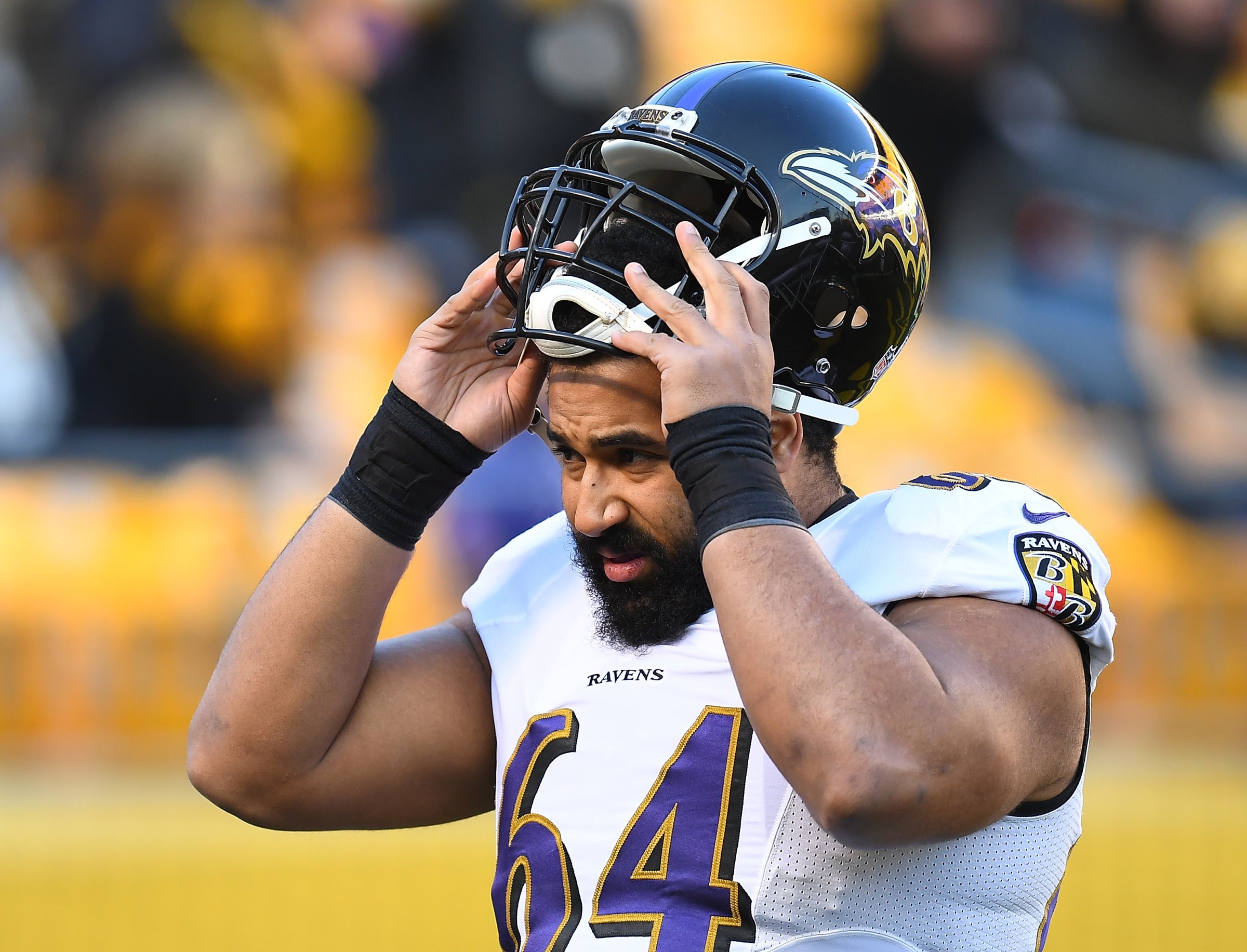
It doesn’t take an MIT-trained mathematician to calculate the risks of playing football. But when he does — and seems to reject the game based on his conclusions —football’s dangers look that much clearer.
This week, the Journal of the American Medical Association (JAMA) published a sobering study: 99% of deceased NFL players were diagnosed with CTE, the degenerative brain disease (CTE is diagnosed posthumously). Of the 111 brains that Boston University neuropathologist Dr. Ann McKee and her colleagues examined, 110 had CTE pathology. Overall, the researchers studied the brains of 202 football players, from all levels (high school, college, semipro and pro): 87% of the players were diagnosed with CTE. Many suffered from the worst CTE symptoms: mood swings, cognitive impairment, signs of dementia.
Two days after the release of the study, Baltimore Ravens offensive lineman John Urschel, who’s spent the last two off-seasons studying for his PhD in mathematics at MIT, abruptly announced his retirement. In a statement, Urschel gave no specific reasons for his decision, saying only that he was excited to pursue his math doctorate, and spend more time with his fiancé before the arrival of their first child, who’s due in December. ESPN and the Baltimore Sun both reported that Urschel’s retirement is linked to the study.
Expect more to follow suit. But let’s be clear about the numbers: The JAMA study does not mean that 99% of all NFL players, retired or otherwise, have CTE. The authors themselves cite a “major limitation” of their research: Many players and their families donated their brains to be researched because they showed symptoms of brain trauma. The 111 brains examined by McKee and her team by no means represent the general NFL player population. Many ex-players lead happy, healthy lives after football. Thousands may have no CTE in their brains. It’s impossible to tell at this point. But CTE’s also impossible to ignore.
(MORE: Degenerative Brain Disease Found In 87% of Former Football Players)
Urschel has publicly grappled with playing football. In a 2015 Players Tribune essay, entitled “Why I Play Football,” Urschel wrote “Objectively, I shouldn’t.” He cited his bright math future as a reason he doesn’t need the headaches: This offseason, a paper he authored, “On The Characterization and Uniqueness of Centroidal Voronoi Tessellations,” was published in the SIAM Journal on Numerical Analysis. In an interview on HBO’s Real Sports program, he said a 2015 concussion temporarily impaired his ability to read advanced math papers. Urschel was entering his fourth season in the NFL. Several players, like ex-San Francisco 49ers linebacker Chris Borland, have recently retired early in their careers, citing head injury fears.
NFL training camps are kicking off in earnest, and fans will turn to the storylines — not to mention their fantasy teams. Tom Brady’s going for another Super Bowl, at middle-age: He turns 40 on August 3. Dallas Cowboys second-year star Ezekiel Elliott, the NFL’s leading rusher as a rookie, had a troubling off-season: He could be suspended due to an alleged domestic violence incident. Will the Atlanta Falcons ever recover from blowing that Super Bowl lead? The Chargers begin their Los Angeles tenure, in a cozy 30,000-seat soccer stadium they’ll temporarily call home.
We’ll be watching. But every year the link between football and brain damage becomes clearer and clear. Players suit up at their own peril. Fans tune in with more guilt.
More Must-Reads from TIME
- Why Trump’s Message Worked on Latino Men
- What Trump’s Win Could Mean for Housing
- The 100 Must-Read Books of 2024
- Sleep Doctors Share the 1 Tip That’s Changed Their Lives
- Column: Let’s Bring Back Romance
- What It’s Like to Have Long COVID As a Kid
- FX’s Say Nothing Is the Must-Watch Political Thriller of 2024
- Merle Bombardieri Is Helping People Make the Baby Decision
Write to Sean Gregory at sean.gregory@time.com